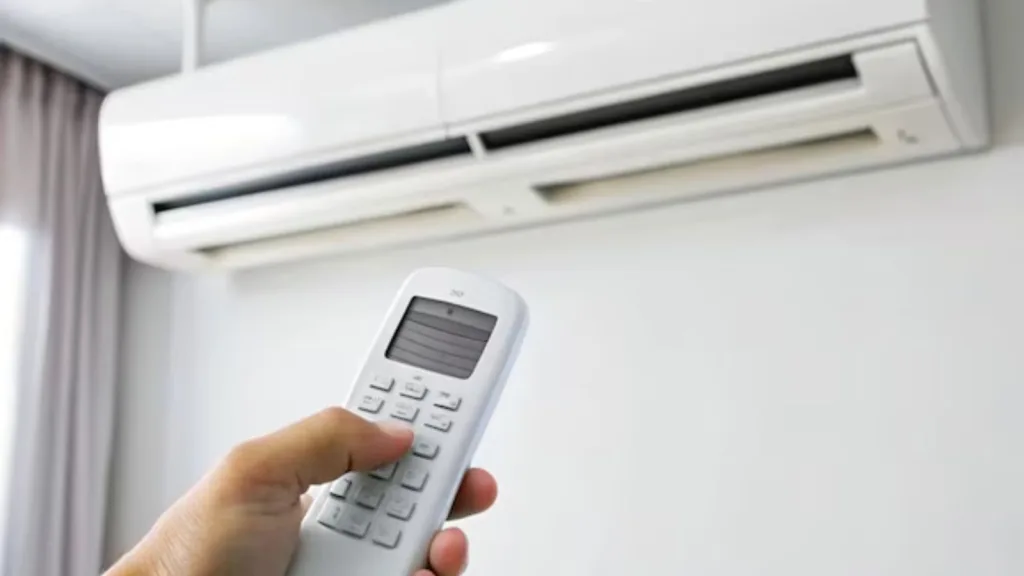India AC Temperature Limits, Breaking news for every Indian household! The government has announced groundbreaking AC temperature regulations that will permanently change how we cool our homes, offices, and cars. Starting soon, air conditioners will be restricted to operate only between 20°C and 28°C, eliminating the ability to cool below 20°C or heat above 28°C.
This isn’t just another policy change – it’s a revolutionary step toward energy conservation that will impact millions of Indians during scorching summer months.
Table of Contents

India AC Temperature Limit Exactly Changes With the New AC Rules?
Currently, many AC units in India allow cooling as low as 16°C and heating up to 30°C. The new regulation completely eliminates this flexibility, creating a standardized temperature range nationwide.
This first-of-its-kind experiment will apply to residential, commercial, and vehicle air conditioning systems. Whether you’re at home, in your office, staying at a hotel, or driving your car, the same temperature restrictions will govern your cooling experience.
The government’s approach builds upon their earlier initiative from 2020, where a default temperature setting of 24°C was imposed on room air conditioners. However, that rule still allowed manual adjustments. The new rule will take away such flexibility, making the 20°C–28°C range a fixed temperature territory.
Why the Government Is Implementing These Restrictions
The primary motivation behind these AC temperature limits centers on energy conservation and power savings. India is working with appliance makers to standardize the cooling range of air conditioners in an effort to cut the energy use of these power guzzlers.
Consider the bigger picture: India faces enormous energy challenges, especially during peak summer months when AC usage skyrockets. Air conditioners consume massive amounts of electricity, and even a few degrees difference in temperature settings can significantly impact power consumption.
This mandate comes amid rising temperatures due to climate change and increasing electricity demands, making energy efficiency more critical than ever before.
How India Compares to Global AC Standards
India’s new approach aligns with international best practices for energy conservation. The USA’s Energy Star programme recommends households set air conditioners to 25.5°C (78°F), while China strictly imposes a minimum cooling temperature of 26°C in government buildings and levies penalties for non-compliance.
This global context demonstrates that India’s 20-28°C range actually offers more flexibility than many developed nations, while still achieving meaningful energy savings.
Real-World Impact on Indian Households
For the average Indian family, these changes will require adjustment but offer substantial benefits. Your electricity bills could decrease significantly since every degree warmer you set your AC can reduce energy consumption by 6-8%.
Many people habitually set their ACs to extremely low temperatures like 16-18°C, often requiring blankets to stay comfortable. The new regulations will encourage more sensible cooling practices that are both economically and environmentally beneficial.
The rule is potentially being enforced in government offices from 2025-2026, suggesting a phased implementation that will likely start with public institutions before expanding to residential and commercial sectors.

Preparing for the Temperature Transition
Smart homeowners should start adapting now. Begin gradually increasing your AC temperature settings to find your comfort zone within the 20-28°C range. You might discover that 22-24°C provides adequate comfort while dramatically reducing your power consumption.
Consider complementary cooling strategies like ceiling fans, proper insulation, and strategic window coverings to maintain comfort at higher temperatures. These methods can make the transition smoother while maximizing energy savings.
The Bottom Line
India’s bold move to standardize air conditioner temperatures could transform energy efficiency and power savings nationwide. While the adjustment period might feel restrictive initially, the long-term benefits include reduced electricity bills, lower carbon footprint, and contribute to national energy security.
This regulation represents India’s commitment to sustainable living and responsible energy consumption – changes that benefit both individual households and the nation’s environmental future.








